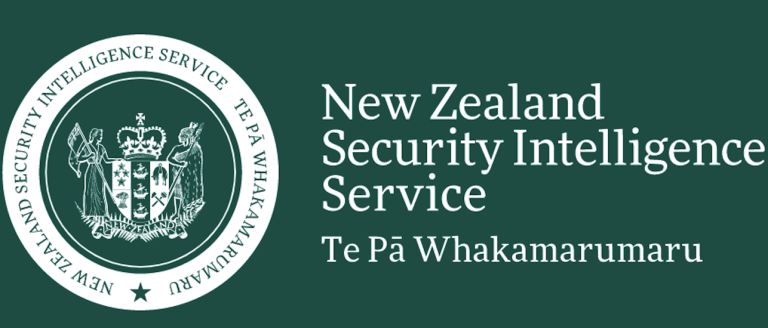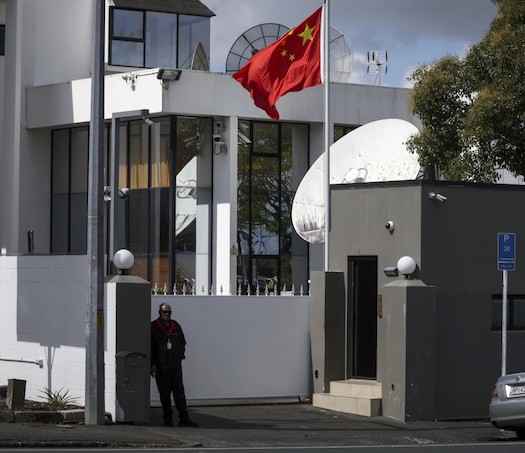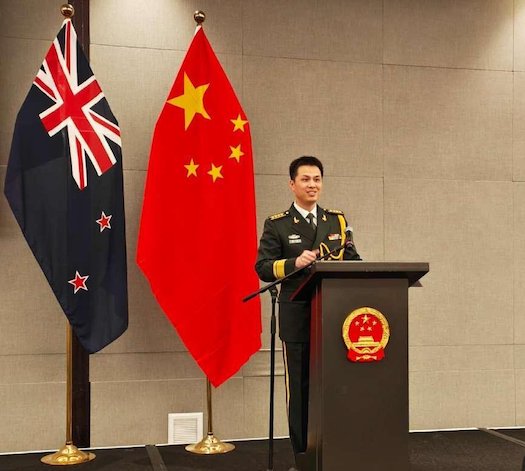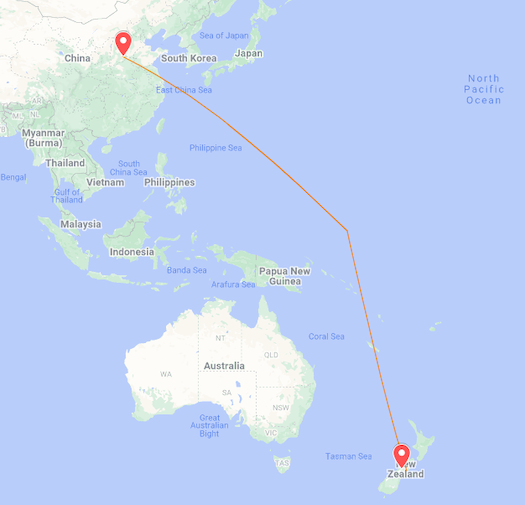
NZ Security Intelligence Service Report Highlights Beijing’s Assertive Moves in Pacific
A Deteriorating Security Landscape
The Security Intelligence Service (SIS), New Zealand’s primary intelligence agency, released its annual threat assessment, titled “New Zealand’s Security Threat Environment,” on August 21, 2025. The report underscores a grim reality: the country faces its most complex security challenges in decades.

Director-General of Security Andrew Hampton emphasized that the threat environment “is deteriorating and that has a direct impact on our safety and security.”
The report identifies China, Russia, and Iran as key actors engaging in covert activities to influence New Zealand’s political discourse, access sensitive technology, and undermine its interests in the Pacific.
China, in particular, is singled out as a “particularly assertive and powerful” actor.
The report details Beijing’s intent and capability to target New Zealand’s strategic assets, including its economic infrastructure and regional influence.
This marks a significant escalation in tone from previous reports, reflecting growing concerns about China’s activities in the Indo-Pacific.
The SIS notes that Beijing’s actions are not isolated but part of a broader strategy to expand its geopolitical reach, often through deceptive or covert means.
China’s Response: A “Cold War Mentality”
Beijing swiftly dismissed the SIS report’s findings as “unsubstantiated and groundless.”

In a statement issued through its Ministry of Foreign Affairs, China accused Wellington of adopting a “Cold War mentality” that misrepresents its intentions.
The statement urged New Zealand to focus on “mutual respect and cooperation” rather than “baseless accusations.”
This response aligns with China’s broader diplomatic strategy of deflecting criticism while projecting an image of peaceful engagement.
However, the SIS report suggests that Beijing’s actions—ranging from cyber espionage to influencing diaspora communities—pose a tangible threat to New Zealand’s sovereignty.
The SIS highlighted specific instances of interference, including attempts to access sensitive technological and economic data.
While the report avoids detailing classified operations, it points to China’s growing presence in the Pacific, where New Zealand has historically played a stabilizing role.
This includes Beijing’s investments in infrastructure and its diplomatic outreach to smaller Pacific Island nations, which the SIS views as a strategic challenge to New Zealand’s regional influence.
The Five Eyes Alliance and Regional Dynamics
As a member of the Five Eyes intelligence-sharing alliance—alongside Australia, Canada, United Kingdom, and United States—New Zealand occupies a unique position in global security.

The alliance, formed during the Cold War, facilitates the exchange of signals intelligence and coordinates responses to shared threats. The SIS report’s focus on China aligns with broader concerns within the Five Eyes, particularly as Beijing’s influence grows in the Indo-Pacific.
Australia, for instance, has faced similar challenges, with reported incidents of Chinese espionage targeting its political and economic systems.
The Indo-Pacific region, encompassing critical maritime routes and economic hubs, is a focal point of geopolitical competition.
New Zealand’s strategic location and its role as a Pacific power make it a target for actors seeking to gain a foothold in the region.
The SIS report warns that China, Russia, and Iran are exploiting technological advancements, including cyber capabilities, to conduct espionage and influence operations.
This includes targeting New Zealand’s research institutions, which are seen as valuable sources of innovation in areas like agriculture and renewable energy.
On the same day as the report’s release, Wellington announced a significant investment of $1.6 billion (NZ$2.7 billion, €1.38 billion) to bolster its Defense Force. This funding, aimed at modernizing military capabilities, reflects the government’s recognition of the need to counter emerging threats.
The investment includes upgrades to naval and air assets, as well as enhanced cybersecurity measures to protect against state-sponsored cyber-attacks.
The Rising Threat of Lone-Actor Extremism
Beyond state-sponsored threats, the SIS report flags a growing risk of lone-actor extremism, often fueled by online radicalization. The accessibility of extremist content on digital platforms has amplified the potential for individuals to act independently, posing a significant challenge to New Zealand’s security apparatus.
The report notes that while state actors like China operate with strategic intent, lone-actor threats are unpredictable and difficult to monitor. This dual challenge—state interference and domestic extremism—underscores the complexity of New Zealand’s security environment.
The SIS has increased its focus on countering online radicalization, working closely with international partners to monitor digital spaces. However, the report acknowledges the difficulty of balancing civil liberties with security needs, particularly in a democratic society like New Zealand. The rise of lone-actor extremism adds another layer of complexity to an already strained intelligence community, which must allocate resources to both external and internal threats.
Navigating Economic and Security Tensions
New Zealand’s relationship with China is a delicate balancing act. As one of New Zealand’s largest trading partners, China plays a critical role in the country’s economy, particularly in agriculture and tourism. However, the SIS report’s findings highlight the risks of economic dependence on a state that engages in assertive geopolitical behavior. The New Zealand government faces the challenge of maintaining economic ties while addressing security concerns—a dilemma shared by other Five Eyes members.
The report’s release has sparked debate within New Zealand about how to respond to China’s activities. Some policymakers advocate for a harder line, including stricter regulations on foreign investment and technology transfers. Others argue for a more nuanced approach, emphasizing diplomacy and engagement to mitigate tensions. The SIS report does not prescribe specific policy solutions but serves as a call to action for New Zealand to strengthen its resilience against foreign interference.
The Pacific region, where New Zealand has long been a leader, is a key battleground in this geopolitical struggle. China’s growing influence in countries like Fiji, Tonga, and Samoa has raised concerns about the erosion of New Zealand’s traditional role as a regional stabilizer. The SIS report suggests that Beijing’s actions are part of a broader strategy to reshape the Pacific’s geopolitical landscape, challenging the influence of Five Eyes nations.
A Call for Vigilance
The SIS report concludes with a sobering message: New Zealand must remain vigilant in the face of evolving threats. Director-General Hampton emphasized the need for a whole-of-society approach, involving government, private sector, and citizens, to safeguard national security. The report’s public release, a government initiative to inform citizens, reflects New Zealand’s commitment to transparency in addressing these challenges.
As New Zealand navigates its role in the Indo-Pacific, the SIS report serves as a critical reminder of the stakes involved. The interplay of state-sponsored interference, economic dependence, and domestic extremism creates a multifaceted threat environment that demands a robust and coordinated response. With China identified as the “most active” actor, New Zealand’s intelligence community is bracing for a future where geopolitical tensions are likely to intensify.
Summary
New Zealand’s Security Intelligence Service has named China as the “most active” threat in its annual report, citing espionage and interference. The report, released August 21, 2025, warns of a deteriorating security environment, with China, Russia, and Iran targeting national interests. Beijing dismissed the claims as “groundless.” New Zealand, part of the Five Eyes alliance, announced a $1.6 billion (NZ$2.7 billion) defense boost to counter these challenges.